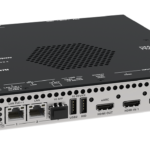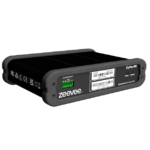We know that needs differ between small and large house of worship venues, and in both cases projectors and projection screens can be a great addition to a HOW technology bundle.
CI‘s end user-focused sister site WorshipTechDecisions.com lays out seven discussion points integrators can use to speak to house of worship clients.
Display options are virtually endless.
If you can pull up desired content on your laptop, you can project it to your congregants (apart from traditional sources such as Blu-ray). Whether it’s hymnals, important psalms or sermon quotes, you will make your audience feel more connected. Also, projectors work with a variety of computers, tablets and multiple connection options.
It makes a service more convenient.
Speaking of hymnals, they can be expensive plus people don’t want to flip through pages to find the lyrics. Not only would projecting lyrics onto a screen save money, it also makes it more convenient for your congregants to follow and sing along.
They’re portable.
If you have an LCD projector, you can essentially take it wherever you want.
If you’re a mobile church going from site-to-site or a multiroom facility, then an LCD projector is ideal. You can use it during Sunday service, then take it to the youth room and display what you need to there. All you need is a place to display the images — a screen or even a large white wall will do.
They provide more information.
Do more than just show lyrics during services. Important announcements can be projected to congregants — anything from reminding everyone to silence their cellphones to displaying verses referenced will help make the service go smoothly.
They offer enhanced communication.
Create a PowerPoint presentation or use other graphical elements to go along with your sermon that you can project to your audience to provide a visual to accompany with your audible communication. When you do something like this, the impact may also aid congregants’ recall of the messages you deliver to them.
They’re simple.
Not the most tech-savvy end user? Not to worry — projectors are easy to use. Once the right connections are made to a computer, iPad or whatever the source device may be, projectors are virtually plug-and-play; simply fire it up and select the source. You may have to focus what’s going to be projected, but typically that just involves twisting the lens until the picture is clearer.
They can add sound.
Not every house of worship needs a full-blown mixing console and audio system. Many projectors come with built-in speakers, which may suffice in smaller chapels or other rooms that serve various activities. However, if you have active speakers in the auditorium you can plug those into the audio jack for better clarity and volume for your congregants.

















